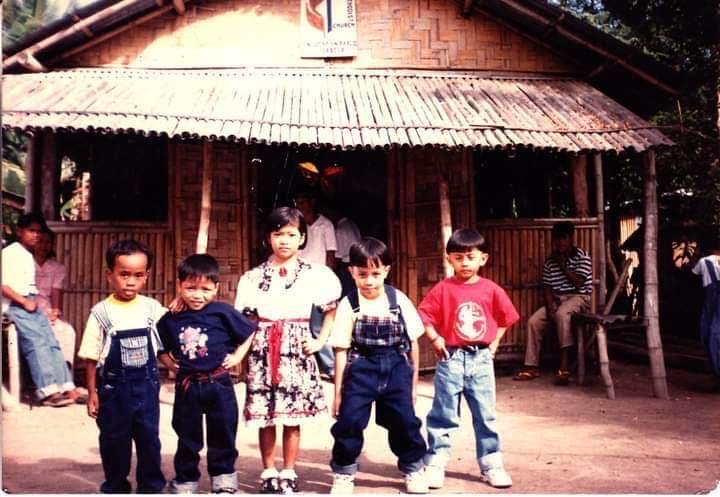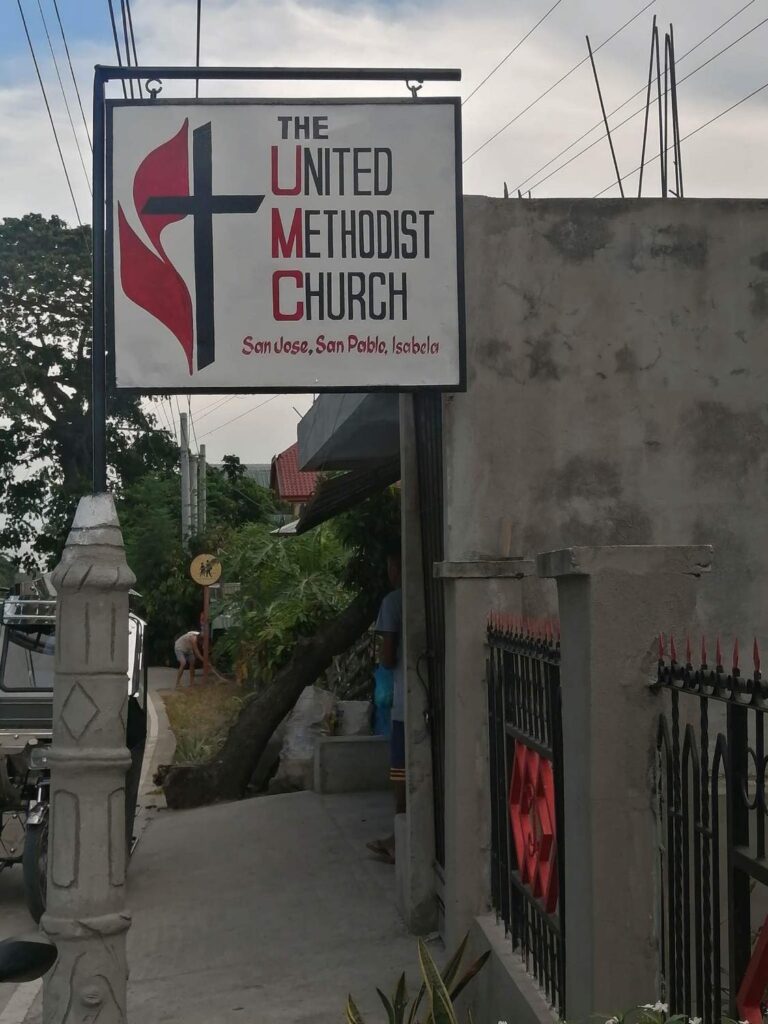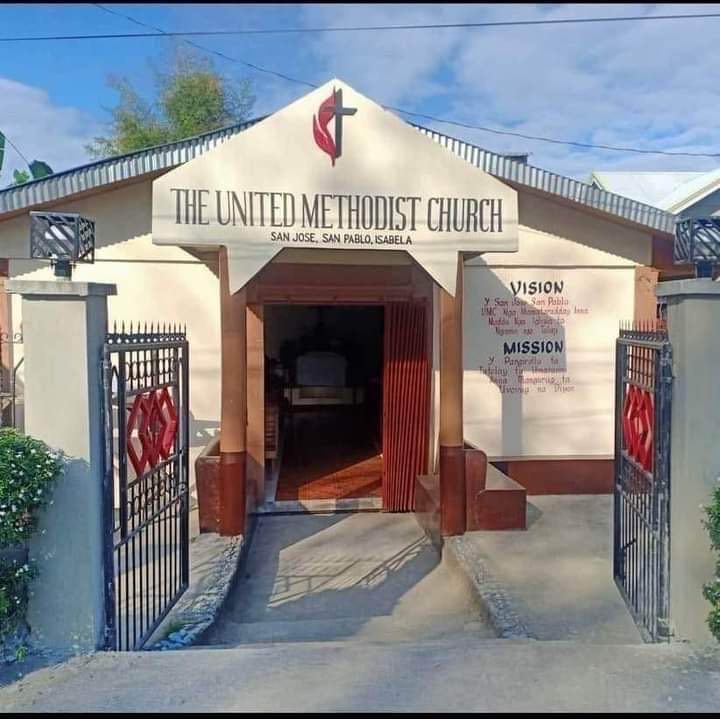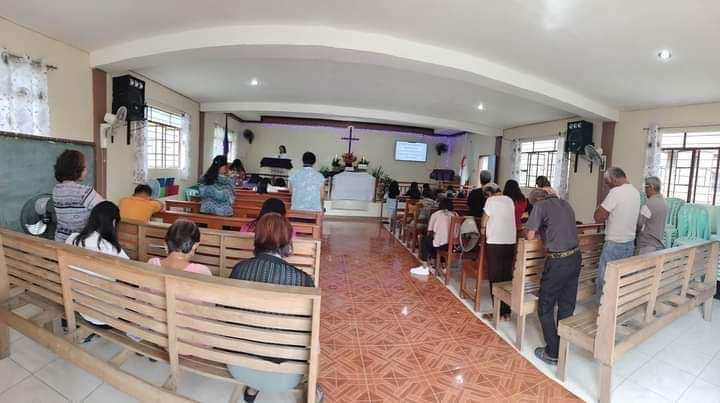In the 1950s, the 1st Signal Corp., Philippine Army (1SCOPA) established its headquarters in Project 4, Quezon City, a newly developed low-cost housing, on a land that used to be part of the Magdalena Estate. The 1SCOPA headquarters was built near the area where the Labor Hospital (Quirino Memorial Medical Center) is now located. The headquarters was soon relocated, and migrants from the provinces started to settle in the area, but it remained to be known as 1SCOPA, which later evolved into Escopa.
At around the same time that 1SCOPA was headquartered at Project 4, a mission work was being established in Barangay San Jose, San Pablo, Isabela. The mission work was initiated by Miguel B. Binag, a politician-turned-supply-pulpit Pastor assisted by his wife, Felisa Umengan Binag, who was a Deaconess-Nurse.
The mission work was established with the help of a local resident and his wife, Vicente Patricio Balabbo and Trinidad Balabbo. Vicente was introduced to Methodism before the second world war due to his association with Miguel Binag. This relationship paved the way for the establishment of Methodist (this was prior to the union between the Methodist Church and the United Brethren) mission in Brgy. San Jose (which, at the time, was also referred to as Brgy/ “Lattu”).
Vicente’s eight (![]() children (Zacarias Balabbo, Rafael Balabbo, Sr. Patricio Balabbo, Sr., Irene Balabbo Crisolo, Crispina Balabbo Nepomuceno, Patrocinia Balabbo Dayag, Demetria Balabbo Dayag) were among the first converts and members of the mission. San Jose was later on recognized as a mission point under the auspices of the St. Paul United Methodist Church during the time of the Rev. Dr. Victor M. Cortez, its Administrative Pastor. This time, it was the second generation of the Balabbo clan which became the core of the mission, under the leadership of Rafael Balabbo (which my parents called Tiyo Rafael).
children (Zacarias Balabbo, Rafael Balabbo, Sr. Patricio Balabbo, Sr., Irene Balabbo Crisolo, Crispina Balabbo Nepomuceno, Patrocinia Balabbo Dayag, Demetria Balabbo Dayag) were among the first converts and members of the mission. San Jose was later on recognized as a mission point under the auspices of the St. Paul United Methodist Church during the time of the Rev. Dr. Victor M. Cortez, its Administrative Pastor. This time, it was the second generation of the Balabbo clan which became the core of the mission, under the leadership of Rafael Balabbo (which my parents called Tiyo Rafael).
Through persistence, hard work, and pioneering spirit, that mission point later became a worshipping congregation, and now a local church. Relying on their own resources, they were able to acquire a church lot and put up their own church building. From a church structure made of bamboo and cogon, it is now a concrete fully painted church building.
In the 1970s, some of the descendants of Tiyo Rafael and his siblings relocated and settled in Brgy. Escopa. They brought with them, not only their hard work and perseverance but their deep religious faith. They all became members of the St. John United Methodist Church. A member of their clan was commissioned deaconess of the UMC.
The forebears of the Balabbo clan were progressive and self-efficient farmers. They were able to send their children to school and were able to rear them and instill in them the Christian virtues which they carry to this day. I was a witness to their faithfulness and perseverance.
When I was a young boy, our father, Rev. Cortez, would tag us along every Sunday afternoon for the worship service in Barangay San Jose. It was a regular family affair. The services were held at the house of Tiyo Rafael.
Even to this day, I seem not to forget those Sunday afternoon experiences. I can still vividly remember that Willis Jeep (owned by our uncle) we use to transport us in going to San Jose. The smell, the taste, and the sting of that scalding hot peanut chocolate drink and the sweet taste of the inatata (rice suman) and bebengka (rice bibingka) that they served for merienda seem to linger in my memory.
I also miss our good Friday 7 Last Word service in our local church, the St. Paul United Methodist Church, where our brethren from San Jose would attend. The service would be followed by a merienda fellowship with them in our house. I still remember the taste of that Julep grape juice which my parents served. Julep grape juice was a rare treat for us children, since we can only have it during Good Fridays, and not in any other day.
We were also expected to attend their annual fiesta celebrations (held every March 18 and March 19), and to pass by and eat in their houses. It was a mortal sin not to attend their celebration, but still, they usually send food, inatata and bebengka for those who were unable to attend their fiesta celebration. In the same way, our family expects them to visit us during our fiesta celebration (held every January 24 and January 25), and were expected to pass by our houses as well.
Now, they have their own progressive and expanding local church. Our grandparents and parents who forged that relationship have all passed away. The third generation of the Balabbo clan settled in Escopa, where young men and ladies were when I was a very young boy. Now, I have grown into adulthood, and they are now enjoying their retirement, but we still remember those memories that linked our families together. Their youthful looks may have faded away, but their faith and perseverance never wavered and faded. I hope that those memories linger and will never fade, and that link that forged our families together will not be broken.
EPHRAIM B. CORTEZ
April 30, 2023
![]() Crispina Cuntapay
Crispina Cuntapay




